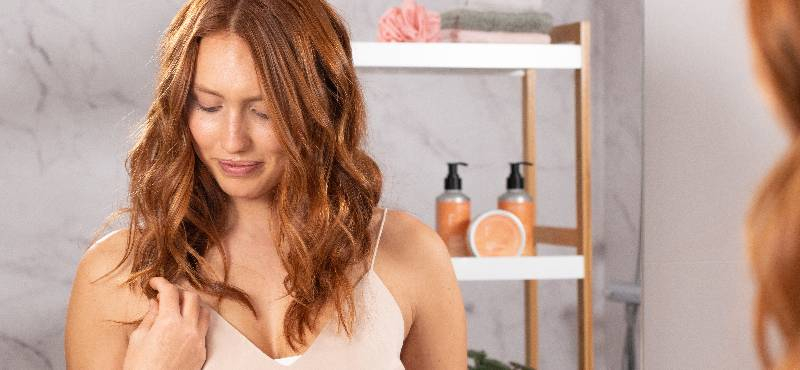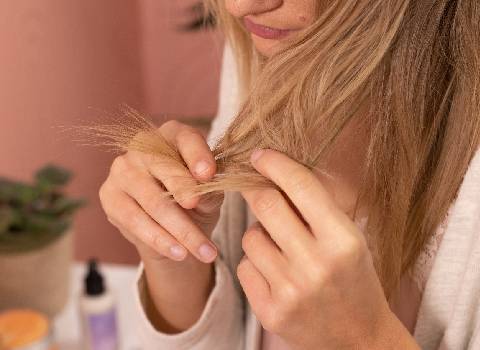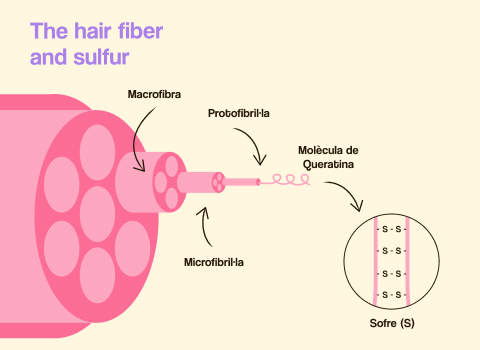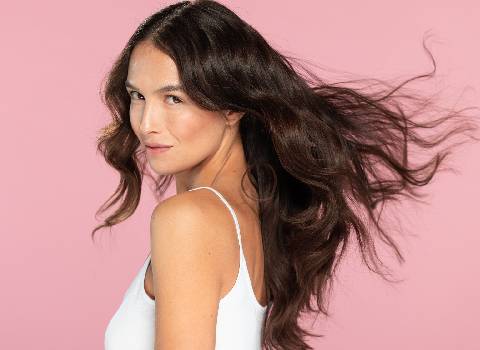Intensive fibre and keratin restructuring treatment - 100ml
NATURAL FORMULAS WITH 20% OFF! GET COUPON
- Exclusive discounts and gifts
- Order tracking
- Free returns management
- 100% free registration
- All products
- Gifts
-
Packs
- See all
-
Skin types
-
Product types
- Best Sellers
-
Skincare
- See all
-
Skin types
-
Product types
-
Haircare
- See all
-
Hair type
-
Product types
-
Bodycare
- See all
-
Treatment
-
Product types
-
Kids and pregnancy
- See all
-
Product types
-
Makeup
- See all
-
Product types
-
Refill
- See all
-
Product types
- Order Tracking
- Start the quiz
- Freshly Club
- Stores
Do you notice your hair is damaged and weak? Go to the root, regain its strength and improve its appearance

Here are your essentials
for making it this far
Heat protectant and detangler with plant-based keratin
Hair Growth & Density Treatment
Hair loss treatment with no rebound effect 50ml
Why is my hair weak and feels straw-like?
Let's start from the beginning: the human body has approximately 5 million hair follicles on the skin, with around 100,000 located on the scalp. These hair follicles are composed of 28% proteins, 2% lipids, 70% water, and other substances. And 90% of those proteins that make up our hair are keratin. You've probably heard of it, but... what is it exactly, and what does it have to do with the weak and straw-like appearance of my hair? Don't worry; we'll see that in a moment.

What is keratin, and what does it have to do with the appearance of my hair?
Keratin is the protein produced by keratinocytes And who are these? The main cells of the epidermis, which as they age move from the inner layers to the stratum corneum (the outermost layer). These cells, when they die, accumulate and disintegrate around the hair follicle, leaving practically only keratin. Thus, they gradually push the keratin upwards, resulting in hair growing from the root, not from the tips, as many people believe.
But back to keratin: it is responsible for providing resistance and elasticity to the hair. There's the key! How? It is formed, like a cable, by chains of amino acids that unite to form a helical structure called alpha helix. And inside that alpha helix, there are many residues of cysteine containing sulfur.

And what does all this mean? First, keratin ensures that the hair maintains its shape, providing healthy growth, enhancing its strength and elasticity (isn't that what most of us want? Healthy, strong, and elastic hair). And second, and super important, we couldn't achieve all this without sulfur. That's why it's crucial to maintain sulfur levels in our body!
What happens to the hair when sulfur levels drop?
The signs and symptoms of decreasing sulfur levels in our body are: weak and brittle nails and hair, joint problems, an increased tendency to skin infections, and an increased difficulty in detoxifying the body.
But, if we go back to the hair, you're probably familiar with split ends, brittle hair, damaged, weak, dull-looking, and "straw-like" hair... Well, all of this is related to low sulfur levels inside our hair fiber (specifically, below 5%).
And how can I restore my hair to make it stronger and healthier?
There are foods rich in sulfur-containing amino acids such as garlic, onions, leeks, asparagus, broccoli, Brussels sprouts, nuts, sunflower seeds, and legumes that you can include in your diet to restore sulfur levels in your body.
Intensive fibre and keratin restructuring treatment - 100ml
But if you're looking for a direct effect on your hair, to see it healthier, stronger, and more elastic, in other words, to show off "great hair," you can help your hair fiber by providing it with the sulfur necessary to rebuild the disulfide bonds of damaged keratin. How? With the Bond-Restoring Hair Treatment, because just as you wouldn't start "building a house from the roof"... Why only care for your hair "for show"? Besides, those results are often temporary, right? So, it's time to get to the "root" of the matter. This hair treatment repairs damaged hair fiber from the inside out with plant-based keratin and natural amino acids. And no silicones! A real injection of energy and vitality to go from damaged, weak, and dull hair to fabulous hair. Order it now to see the results as soon as possible!
Freshly wants to tell you something! At Freshly we keep on learning every day how to make decisions that bring us closer to a better future. Sometimes we are called dreamers, but what we really have is an optimistic vision and clear path for reaching that tomorrow.
Would you like to join this adventure? If you're here, it's because you are a demanding person when it comes to taking care of your body and the planet. By subscribing to the newsletteryou will receive articles like this one to continue learning, as well as news and exclusive discounts. Are you up for it?
psst... there's more
you're interested




